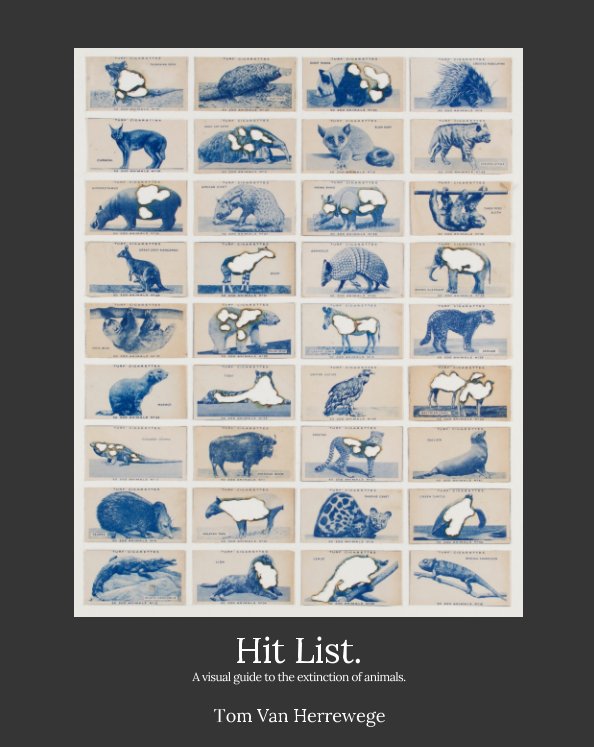Hit List
A visual guide to the extinction of animals.
de Tom Van Herrewege
Este es el precio que tus clientes ven. Editar lista de precios
Acerca del libro
Over the last year, I have been working on a large series of artworks that is titled, Hit List. I have been sourcing different sets of old cigarette cards and old encyclopedia pages, with some being over one hundred years old, and then I have been editing these by burning away the animals' image according to the individual species' conservation status on the IUCN red list of threatened species. So the closer the individual animal depicted on the card is to extinction, the more of its image is burned away.
This artist's book contains the images of this series of artworks and visually reveals the devastating effects humans have had on the rest of the animal kingdom. There is also a text contribution by Oceanic Wildlife Conservation.
This artist's book contains the images of this series of artworks and visually reveals the devastating effects humans have had on the rest of the animal kingdom. There is also a text contribution by Oceanic Wildlife Conservation.
Sitio web del autor
Características y detalles
- Categoría principal: Bellas artes
-
Características: Vertical estándar, 20×25 cm
N.º de páginas: 40 -
ISBN
- Tapa dura impresa: 9781388664800
- Fecha de publicación: abr. 05, 2018
- Idioma English
- Palabras clave Animals, contemporary art, wildlife conservation
Ver más
Acerca del creador
Tom Van Herrewege
Leicestershire, England.
My work is inspired by the incredible diversity of animals' physical forms. I am interested in man’s and my own individual interpretation of this throughout history and the ways in which the animal kingdom is perceived through different aspects of culture. It is the variety in our perception and logic that is formed from experiencing the animal form and how this is embellished within cultures that drives my practice. Recent projects have taken me to places across the world to understand closer unique perceptions of wild animals within their own environments and from the indigenous people and settlers that share these places.


